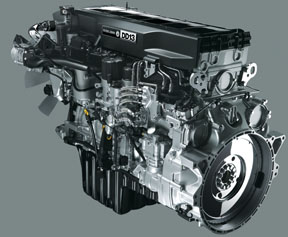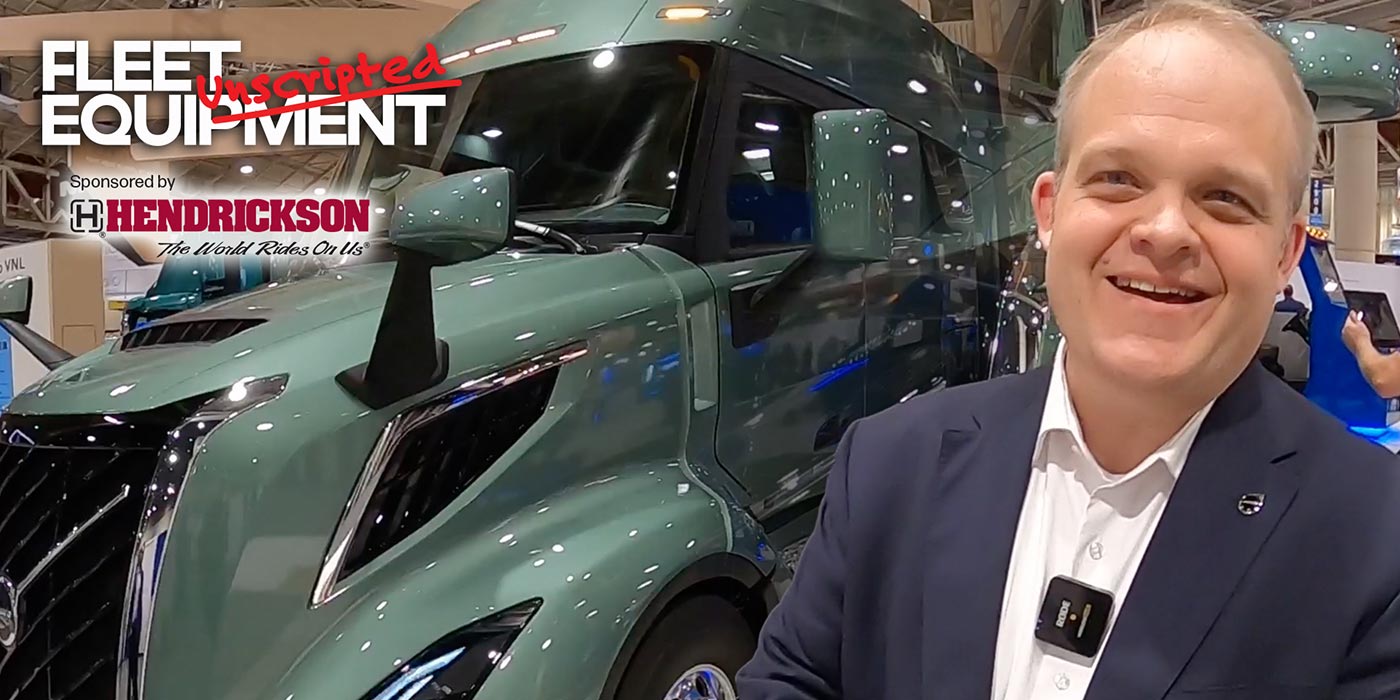
Detroit Diesel has introduced its new DD13 engine. A smaller version of the DD15 engine, the DD13 displaces 12.8L, and features a 6-cylinder, in-line configuration.
Designed for the less-than-truckload, regional distribution, and vocational markets, the DD13 will be offered in output and torque variants from 350 to 450 HP and 1,350 to 1,650 lb.-ft., the company said.
The DD13 is the second in a series of all-new heavy-duty engines from Detroit Diesel that will eventually cover three displacement categories: 13L, 15L and 16L. Part of the Detroit Diesel engine family, the DD13 shares a common base engine design that will be leveraged on a global scale by Daimler Trucks.
“We have taken all of the lessons learned from our 70 years of building engines and applied this extensive history to our new engine,” said David Siler, director of marketing for Detroit Diesel. “The DD13 – which is truly a culmination of our experience and innovations – delivers what our customers want: economy, serviceability and performance.”
Featuring many of the same technologies found in the DD15, but weighing 400 lbs. less, the DD13 provides up to five percent better fuel economy when compared to the MBE 4000 (which it will be replacing).
According to the maker, built to spend more time in top gear, the DD13 pulls strong down to 1,100 RPM, which results in increased fuel economy. The DD13’s enhanced cooling system reduces fan on time – further contributing to the engine’s fuel-efficient design.
Another key feature is the engine’s electronically-controlled amplified common rail fuel system (ACRS) – a fuel delivery system that works in unison with Detroit Diesel’s DDEC VI engine management system to deliver the exact amount of fuel needed at just the right moment, creating an optimal combustion event. Not only does this result in a more fuel-efficient engine, the maker said, it cuts NOx emissions without draining power.
“The DD13 is the only engine in its class to offer ACRS,” said Admir Kreso, director, HDEP Engineering for Detroit Diesel. “We are utilizing our proven technologies across the board to help our customers save money.”
The DD13 can go further between routine service intervals than any similarly spec’d engine – up to 50,000 miles, according to the manufacturer. The engine was designed with convenience in mind – the cartridge-style filters (oil, coolant and fuel) are positioned above the frame rail, which makes service quick, easy and clean, and the maintenance-free crankcase breather further contributes to low cost of ownership.
“Many of the design features we included enable customers to easily perform routine maintenance on their own,” said Siler. “This reduces time spent in the shop, off the road – and increases profitability during this ever-so-competitive time in our industry.”
And, with 65 percent of the engine’s components being the exact same as the DD15 – the DD13 offers unmatched parts availability. Detroit Diesel said its distribution network ensures that all of its 800 plus North American parts and service outlets are stocked with genuine Detroit Diesel parts. The common design between the DD15 and DD13 also ensures that trained and qualified technicians are always available.
The DD13’s torque curve provides an extremely wide peak torque range – up to 500 RPM wide. This allows drivers to easily find the DD13’s ‘sweet spot’ for optimum engine performance. In addition, an asymmetrical turbocharger results in less moving parts when compared to VGT or waste-gated turbocharger designs, creating a more reliable and durable engine, the company said.
Other key engine features contributing to the all-around performance of the DD13 include the Jacobs engine brake, which is integrated into the engine and offers up to 546 BHP; a robust rear gear train; and a ribbed cast iron block that lowers noise vibration harshness (NVH).
The DD13’s design also allows for the smooth and seamless integration of BlueTec SCR technology for reducing emissions to meet EPA 2010 standards without compromising power, fuel economy or performance.
The market launch of the DD13 will start with Sterling Trucks and Freightliner in 2009, followed by Western Star in 2010. It will be manufactured at the Detroit Diesel plant in Redford, Mich.
Visit Detroit Diesel, a Daimler company, at http://www.detroitdiesel.com.




